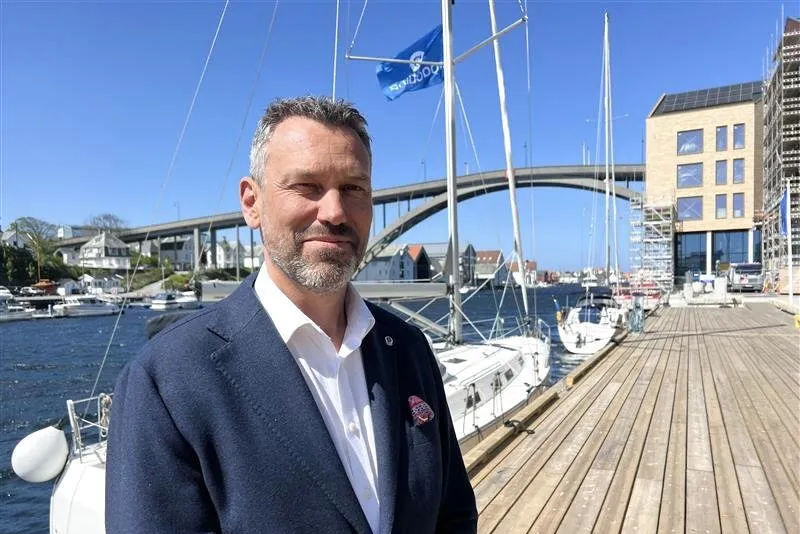Prepare for espionage and sabotage, offshore wind sector warned
Tue Lippert, defence and security advisor at WindEurope, warns that the lack of integrated security planning in offshore wind farms poses a serious risk

Cable sabotage, remote manipulation of wind turbines, and Russian mapping of critical offshore infrastructure – Russia’s war in Ukraine and broader geopolitical instability have already placed energy security and preparedness under the spotlight.
In April, a power outage in Spain starkly demonstrated the vulnerability of the electricity grid, regardless of the final cause.
“We haven’t used our time wisely,” said Tue Lippert, defence and security advisor at WindEurope.
“No offshore wind farms built in Europe to date have incorporated security as an integral part of their design. That is a problem,” Lippert stated on behalf of the European wind industry.
“The threat is real and serious. We’ve lived in what we perceived as peacetime for the past 35 years, but recent events have shown otherwise. During this period, we’ve neglected our opportunity – and duty – to protect critical infrastructure when designing offshore wind farms.
“Offshore wind, like all other critical offshore infrastructure, is completely unprotected. There is no security monitoring in place whatsoever,” Lippert warned.
“Nato is telling us, as a united offshore wind industry, that we must be smart and proactive. We must safeguard our critical underwater infrastructure. Security considerations must be integrated from the planning stage, through construction, and into operational management.”
Some European countries have begun including security requirements in tenders for new offshore wind projects. Poland, for example, is preparing a new offshore wind auction this year. Several companies, including Equinor, are already developing close to 6GW of offshore wind capacity along the Polish coast, while another 8GW are slated to be tendered in coming years.
“Poland’s tenders include requirements to protect critical infrastructure, both in terms of security and defence,” Lippert says.
According to MarineLink, Polish authorities are drafting legislation that would impose security obligations on offshore wind farms already under development, including provisions for security firms to patrol offshore infrastructure.
Lippert also highlights Belgium as a model for cooperation between offshore wind operators and defence authorities.
“The Belgian Navy works closely with the offshore wind sector and has developed strong procedures for integration and collaboration.”
Lippert outlines several specific actions offshore wind developers can take:
- Install systems to monitor and physically secure offshore installations.
- Deploy sensors capable of detecting, tracking, and identifying air, surface, and underwater traffic.
- Establish procedures for reporting and alerting authorities in the event of suspicious activity.
Won’t these measures increase costs in already expensive projects?
“Of course, there are costs involved. There’s an ongoing debate about whether these should be borne by developers or governments. Ultimately, it’s the consumers who will pay – through their electricity bills, just as they fund the defence budget,” Lippert says.
So far, Denmark has not included security requirements in its offshore wind tenders. However, Lippert notes a shift in attitude: Danish authorities recently agreed on the framework for a new offshore wind tender involving 3 GW across three wind farms.
As part of the agreement, the Danish government will allocate DKr1.1bn ($168m) from the defence budget for “preventive measures” to cover the surveillance costs associated with offshore wind farms.
“This is significant, as the burden has so far been placed on developers. But it doesn’t account for additional or enhanced measures to protect offshore infrastructure,” Lippert adds.
In one instance, journalists tracked a Russian vessel visiting no fewer than seven British and Dutch offshore wind farms during a single voyage.
British naval analyst HI Sutton stated in the documentary 'The Shadow Side' that Russia’s interest in European underwater infrastructure “…suggests a focus on seabed warfare or potential sabotage or attacks on infrastructure.”
“Yes, we are seeing Russian activity in European offshore wind farms. But not just in the wind farms—they are mapping all of our critical underwater infrastructure,” Lippert confirms.
Last year, Swedish authorities unexpectedly cancelled plans for 13 offshore wind farms. The Swedish Armed Forces argued that the developments would have unacceptable consequences for national defence, particularly given Russian activity in the Baltic Sea.
Lippert disagrees, arguing that offshore wind farms, like other local and regional power sources, enhance stability and security.
“We must build power plants, including offshore wind, in the same way we build our defence. They are two sides of the same coin – both provide strategic protection. By spreading production across multiple sites, we reduce vulnerability to ‘single point attacks’,” he says.
Neither the Sørlige Nordsjø II nor Utsira Nord tenders included specific security requirements for developers. However, the tenders did state: “The Ministry is working on regulatory changes, including those related to national security. Project area allocations will be conducted in accordance with the applicable regulations at the time.”
NVE has not been given a deadline, but the Ministry aims to have the regulations in place before the first offshore wind licence is granted in Norway. Ventyr must submit its application for Sørlige Nordsjø II by October 2026, though it may come earlier.
The State Secretary emphasises the importance of industry awareness:
“The Ministry will always consider national security. I believe the entire industry is increasingly aware of this issue, and it’s important that they take it seriously,” Bergmål says.